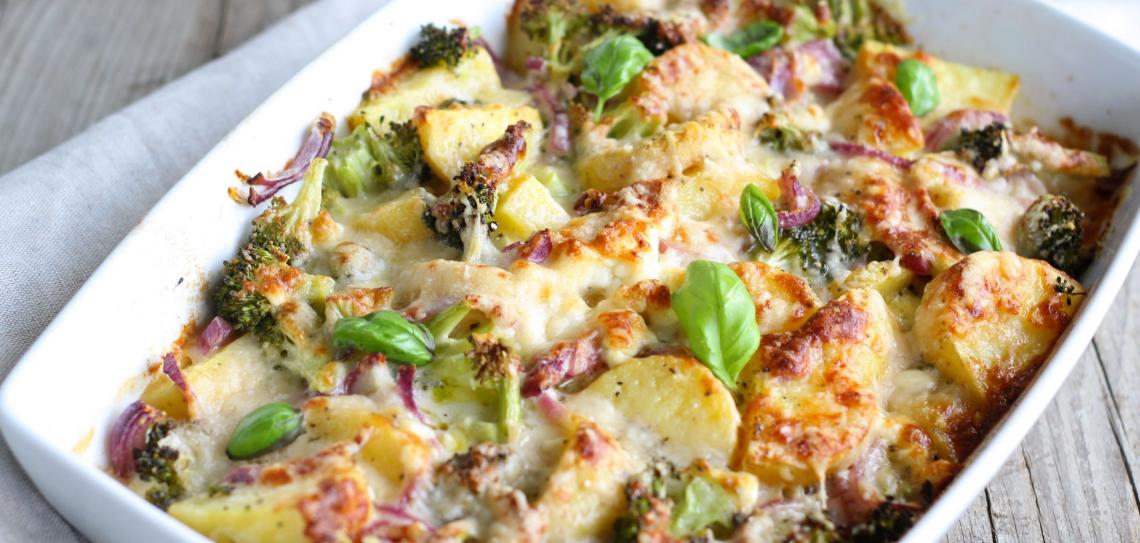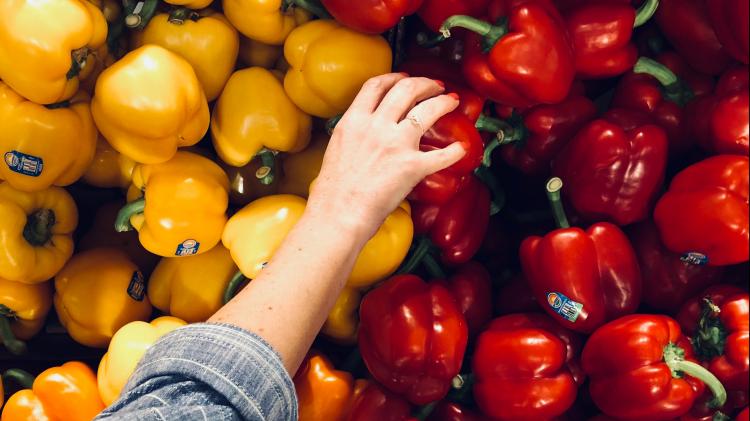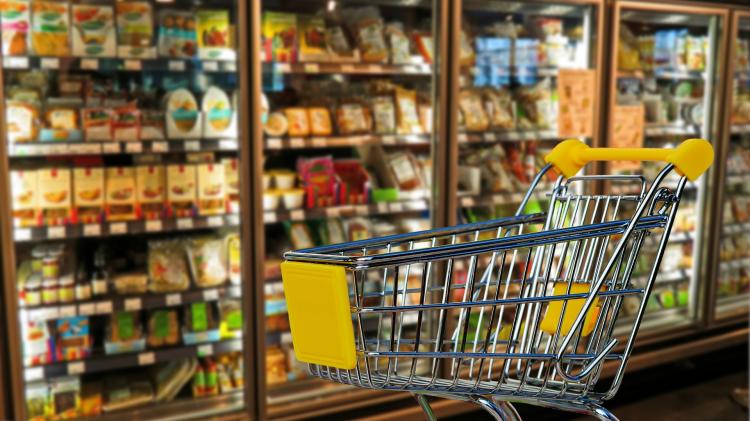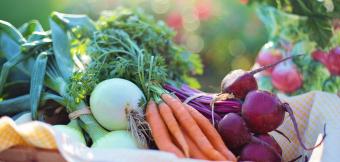
Reduce food waste
One-third of the food produced worldwide is thrown away. This means wasted CO2 from production and extra methane from landfill. Wasted food is also bad for your finances. Save money and emissions by shopping carefully, cooking up leftovers, storing food properly and giving away any excess.

The problem of food waste
The United Nations reports that an estimated one-third of the food produced worldwide for human consumption is wasted. In the United States, 40 percent of edible food is thrown away by retailers and households. In the United Kingdom, 8.3 million tons of food is wasted by households each year.
We all throw away uneaten food every day; mouldy bread, off milk, rotting vegetables, black bananas, scraps from our plates. This wasted food is doubly bad for the climate. First, the CO2e* released through producing that food has gone to waste; with 30% of global greenhouse emissions coming from food growing and processing, that’s a serious problem. Second, most of that food waste goes straight to landfill where its decomposition produces methane, a major greenhouse gas. Wasted food is also pretty bad for your family finances. Why buy something just to throw it away unused?
There’s plenty you can do to reduce the amount of food you waste, saving both emissions and money. The Worldwatch Institute has produced a simple online guide to preventing food waste. Here’s a summary.
1 ) Buy Less Food. People often buy more food than they need and allow the excess food to go to waste. Instead of buying more food, buy food more responsibly. Making a shopping list and planning meals before shopping will help you buy the amount of food that is needed so that you don’t waste food.
2) Reheating and reusing. Eating up leftovers is the best way to reduce the amount of food that gets wasted. Leftover food is perfect for making curries, casseroles and fried hash. Love food hate waste offers cooking enthusiasts recipes for their leftovers. Be careful to reheat thoroughly, and never reheat food more than once. Pretty much all foods are safe to eat for 48 hours after first cooking if kept in a sealed container in the fridge; if you know you can't eat the leftovers in that time, freeze them.
*Carbon footprints include carbon dioxide, methane, nitrous oxide and other greenhouse gases, but are always stated as carbon dioxide equivalent, CO2e.

3) Improve Food Storage. Food is often wasted because it isn’t stored properly which allows it to mould, rot, or get freezer burn. Follow the storage instructions on the package. Keep leftover food in a sealed container or tightly wrapped bag. Reseal opened packets carefully, or transfer to an airtight container. Keep the refrigerator temperature at or below 40° F (4° C). The freezer temperature should be 0° F (-18° C). Check temperatures periodically. To minimise emissions, use a modern, efficient fridge (see Action 47: 'Use efficient appliances')
4) Understand food labelling.
Keep an eye on the dates on your food; eat the oldest stuff first. Different countries use different systems, but there is usually a ‘use before date’ which means the food should be thrown out after that date, or a ‘best before date’ which is simply advisory. There is rarely anything wrong with food past its best before date. Canned food can last for years, old bread can be rescued by toasting, vegetables and fruit can be saved by cutting off any bad parts.
5) Donate To Food Banks. Donating food that you don’t plan to use is a great way to save food while helping to feed the needy in your community. (Actually, you can also ‘donate’ your excess food to friends and family. If you cook it into a meal or a cake they’ll love you even more).
6) Shop Responsibly. Shop at places that practice responsible waste management. Many grocery stores are hesitant to donate leftovers but consumers can encourage grocery chains to support local food banks. You can also reduce the store’s waste by buying food from the ‘reduced’ or ’seconds’ section, which has the added bonus of money savings.
7) Compost. Rotting food that ends up in landfill releases methane, a potent greenhouse gas. Composting allows food waste to be converted into nutrient rich organic fertilizer for gardening. Start a home compost scheme to reduce the food waste you send to landfill.
And finally, if you've got some old vegetables lurking in the store cupboard or leftovers languishing in your fridge, then have a look at the Rock What You've Got Recipes for Preventing Food Waste.
Picture credits: 1) Einladung_zum_Essen on pixabay.com 2) syndey Rae on unsplash.com 3) Alexas Fotos on pixabay.com
Buy a local, seasonal recipe book, and use it
Be conscious of food waste whenever you cook.
Support schemes that make use of waste food in your community
Encourage your local store to donate or compost waste



